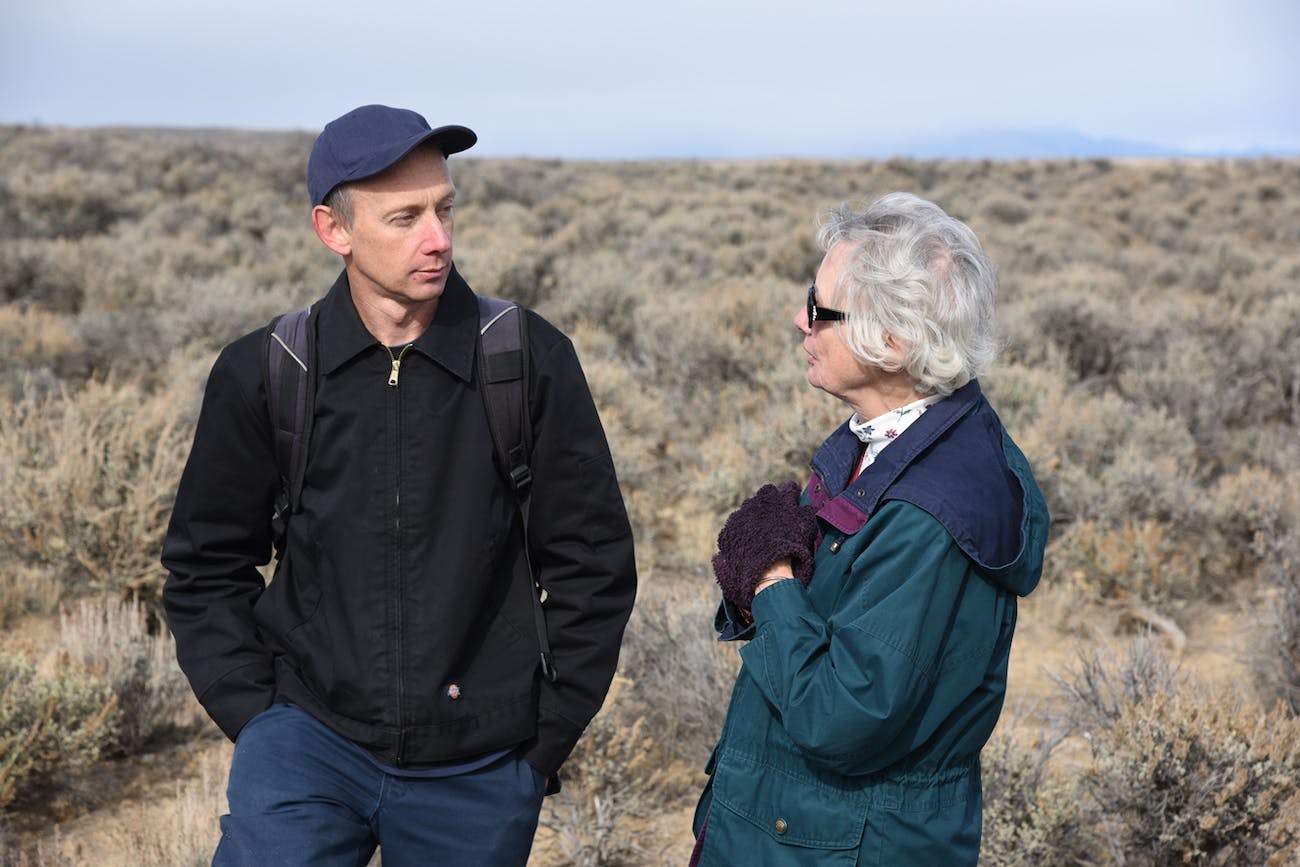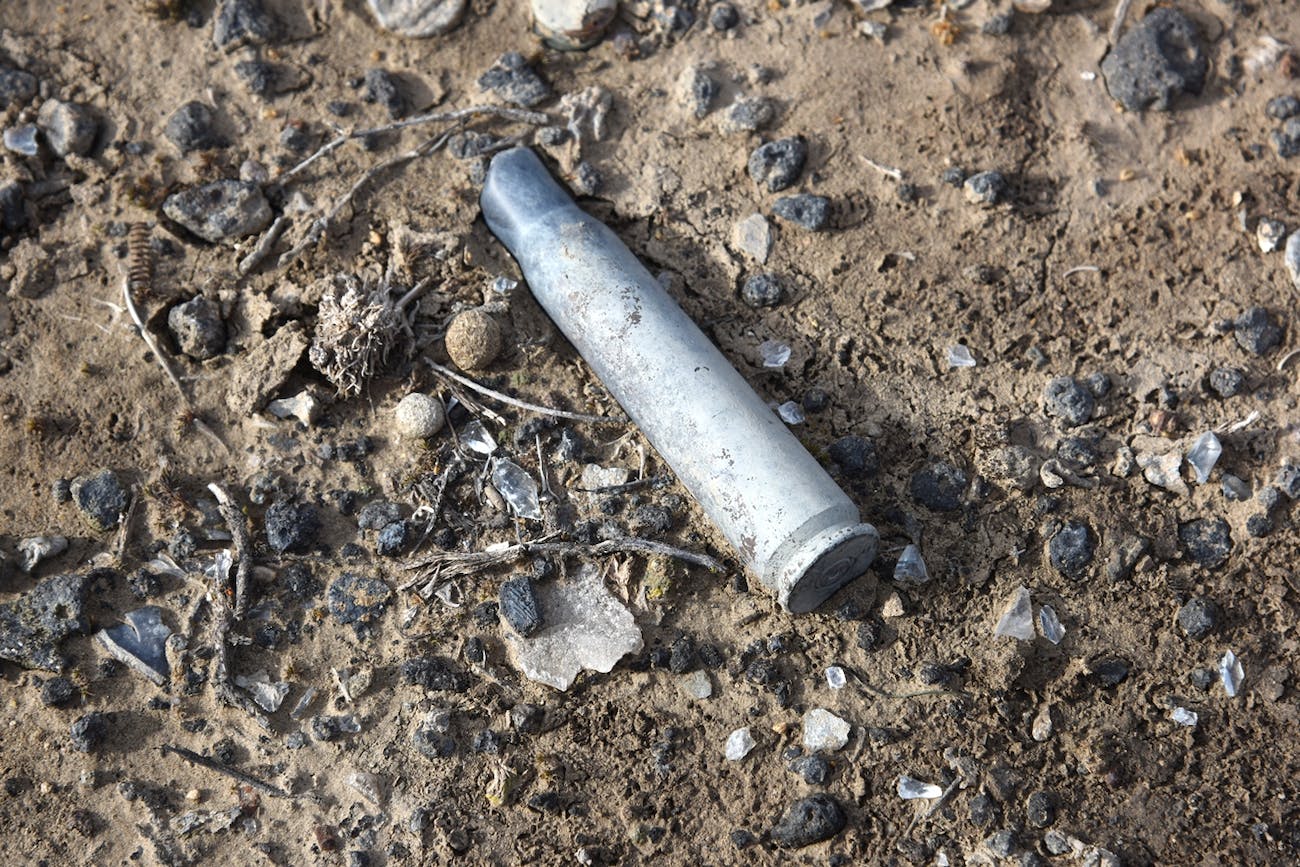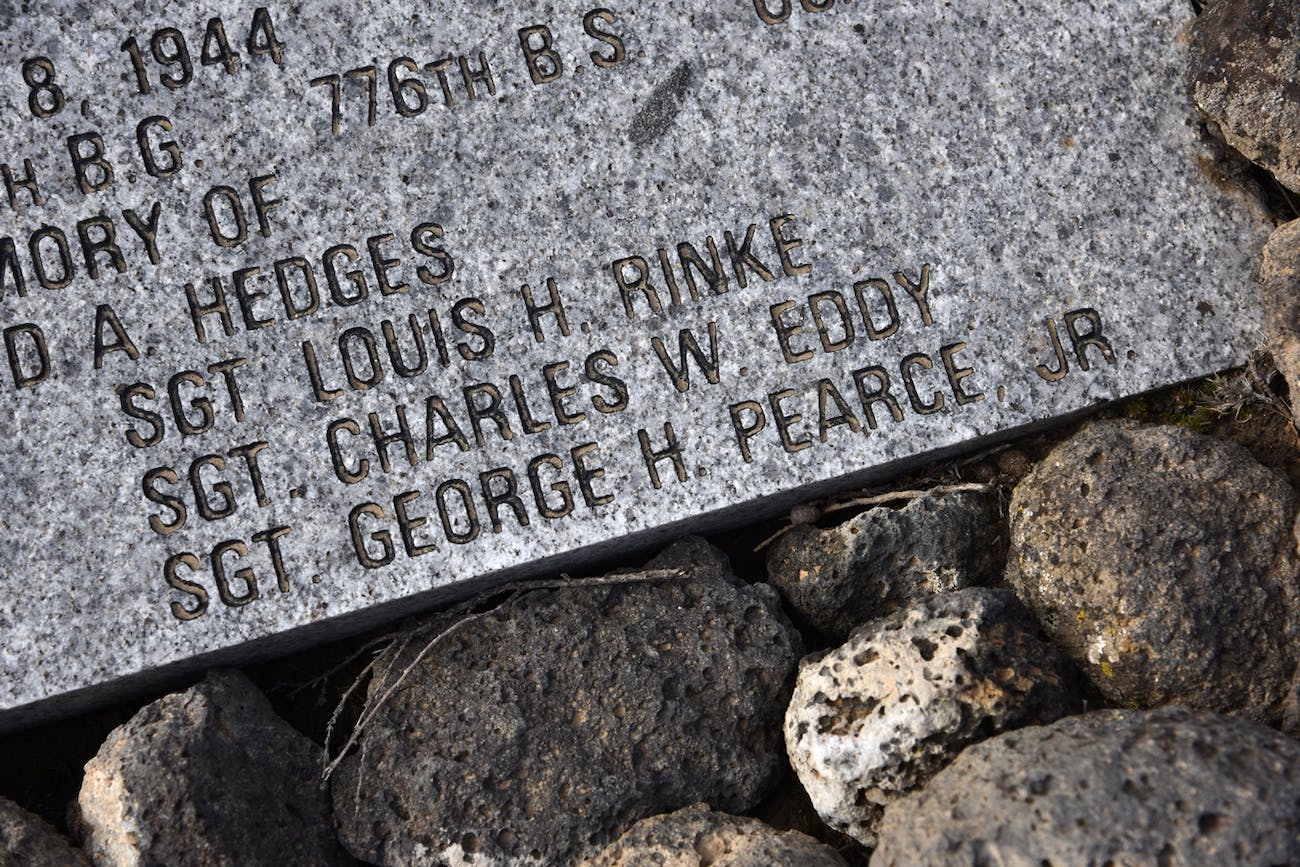Veterans Day came early for Nancy Gavalis of Bristol, N.H., who on Nov. 9 was able to stand at the place on the Idaho sage desert where her father, Sgt. George H. Pearce, Jr., lost his life almost 72 years earlier.
Though he never saw combat, Pearce, 25, was a casualty of war. He was one of seven crewman killed the night of Jan. 8, 1944, when their B-24J “Liberator” bomber crashed on a training run out of Pocatello.
With help from Idaho National Laboratory archaeologists, Gavalis, 74, got to visit the very spot where her father likely died.
The weather was gusty, but the temperature was not as harsh as Idaho can be in early November. Gavalis, her husband, Dick, and INL archaeologist Hollie Gilbert hiked a half-mile in to the crash site just north of West Twin Butte. “I had no idea what it would look like,” Gavalis said.
When they came over a ridge and down the slope to where the wreckage lay undisturbed, “I had a peaceful feeling, like he was looking down,” she said. “It was happy and sad.”
Originally from Canton, Conn., Gavalis was only 2 when her father died. She has no memories of him, only the stories that her mother, Madeline, had told her.
Gavalis and her husband were invited to Idaho after the crash site was picked to represent Idaho in the federally sponsored “Making Archaeology Public” project, which will commemorate the 50th anniversary of the National Historic Preservation Act in 2016.
The act mandated that any site of archaeological significance on federal land had to either be left undisturbed or mitigated in some fashion.
“It’s a way to highlight the cool sites we find because of federal archaeology,” said Gilbert, who has worked at INL for 32 years. One thing that makes archaeology particularly unique on the U.S. Department of Energy Idaho site is that most of its 890 square miles is about as undisturbed as land can be.
According to the Army’s official report, Pearce’s four-engine bomber, B-24J 42-73365, had left the airfield at Pocatello (now the municipal airport) just after 8 p.m. Most of the crew had returned from Christmas furlough, and they were due to ship out later in the year. D-Day was less than five months away.
The mission that night was to drop practice bombs on the Arco Aerial Bombing Range, now part of the Idaho DOE site. The tower operator at the bombing range reported seeing the plane at 8:50 p.m., and at 9:05 p.m., after the plane had made three passes at 20,000 feet, he reported seeing a flash and hearing an explosion.
Sheepherders on the base of the butte that night had an even closer view. They recounted to investigators how they saw the plane trying to get altitude but going into a spin at 500 feet, then crashing into the ground and exploding. It took five minutes on horseback to get to the scene. They searched for survivors, but the heat of the explosion had likely eliminated the remains of the flight crew.
World War II ended in 1945, and in 1949 the desert west of Idaho Falls became the National Reactor Testing Station, later Idaho National Laboratory. The crash of Aircraft 42-73365 might have been forgotten entirely if not for the efforts of Marc McDonald, a Pocatello historian, aircraft enthusiast and volunteer with Project Remembrance (http://aircraftwrecks.com/remembrance/remember.htm).
In January 2014, almost 70 years to the day after the crash, McDonald called INL’s Cultural Resources Office to tell them that based on an Air Force registry he’d been reviewing he believed there was a crash site on the desert.
That message was passed on to Gilbert and her team, who consulted with McDonald, used records to identify potential crash site areas and then pulled corresponding satellite images of the desert. They narrowed the area down to three possible sites and set out in March 2014, approaching from the southwest.
An hour-and-a-half elapsed before they found an aluminum gauge in the brush. Spreading out, they found more debris — engine sections that had broken up, wires, coils, solenoids, .50-caliber shell casings, even an electric socket plate from the front of a flight suit (B24 cabins were not pressurized or heated, so crewmen wore clothing that plugged in like an electric blanket.)
All was pretty much as it had been for 70 years, after the Army had collected the remains and cleared away the larger pieces of debris. Gilbert was the team member who made the big find of the day, a 1935 high school class ring with the letters WHHHS and the initials M.A.H. inside.
“Everybody got very quiet,” Gilbert said. “That completely changed the mood on the site.”
The initials didn’t belong to any of the crew, and the ring was obviously a woman’s size. Sifting through the records, they discovered Pearce had been married to Madeline A. Hopkins, and that both had graduated from William H. Hall High School in West Hartford, Conn.
Once they gathered the information on the Idaho crash, “We talked to all the families and got a lot of different reactions,” McDonald said. “Some of them said, ‘Why are you calling us? This is ancient history.’ Then there was Nancy’s family.”
Tracking her down, his first contact was with George Pearce’s brother Malcolm, now in his 80s, who gave them Nancy’s phone number. When he called her, she thought it was a scam until he told her Malcolm had given him her name.
“I just stood there on the phone thinking to myself, ‘I don’t believe this,’” she said. “It was just such a special day.”
The same time the ring was being returned, McDonald had a granite marker inscribed with the names of the crew: Lt. Richard A. Hedges, Lt. Lonnie L. Keepers, Lt. Robert W. Madsen, St. Richard R. Pitzmer, Sgt. Louis H. Hinke, Sgt. Charles W. Eddy and Sgt. George H. Pearce, Jr. He placed it near the crash site.
In preparation for the Making Archaeology Public project, Gilbert said they wanted to invite anyone related to the crew.
Gilbert said the B24 crash site is special because it offers an immediate link to people still living. “With the prehistoric sites, you’ll find some arrowheads or pieces of pottery,” she said, “but this tells a story of the past connected to the present.”










